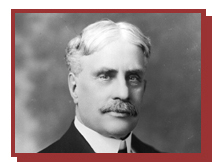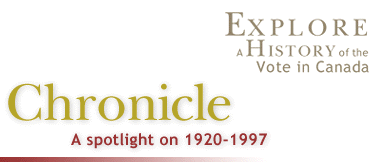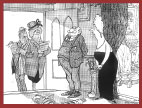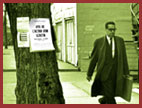 |

|
Voters lists
The need to create federal lists Preparing voters lists Publishing voters lists The first permanent voters list |

Parliament’s overhaul of the electoral law in 1920 not only established the post of CEO but also centralized the financial and logistical operations of federal election administration for the first time. It was a comprehensive revision of the election law, yet flaws remained in the system, some of which were not removed until the 1980s.
The most serious deficiencies concerned continuing obstacles to voting for some female electors; exclusion from the franchise of specific groups for racial, religious or economic reasons; and administrative disenfranchisement of individual voters. In the last category were a number of small but irritating points, many of which were cleared up by periodic electoral reform between 1920 and 1982.
As was the case before 1920, the new law provided for elections to be conducted on the basis of lists of eligible electors; in urban areas, the lists to be used were provincial lists compiled previously, but in rural areas, an enumeration would be conducted. These lists proved contentious, not only in their compilation, but also in what they contained and how they were published. The most serious problem – placing the names of eligible women on the electoral rolls – was solved by 1929, but methods of preparation, revision and publication continued to be debated and modified over the years.
The reason for the distinction between ‘rural’ and ‘urban’ polling divisions and the two different methods of compiling and revising voters lists was concern about the completeness and accuracy of existing voters lists in rural areas. This fear was borne out in the 1921 election, when lists from rural Ontario proved virtually useless.
The law therefore stipulated that in rural polls (places with a population of less than 1,000) lists were to be ‘open’. People would be enumerated by specially appointed ‘registrars’ in a door-to-door canvass. (The term ‘enumerators’ was avoided because it was associated with the 1917 election, when enumerators were widely seen as partisan.) Voters missed by the enumeration could swear themselves in on election day, as long as another eligible voter vouched for them. But in urban polls, voters left off a provincial list had to apply to a revisions registrar – one was available in each constituency for 10 hours a day for 6 days. After this time, urban lists were ‘closed’ until the next election. The argument used to justify this difference in treatment was that rural areas were harder to canvass, so election-day swearing in was needed to protect rural voters’ franchise. It was not until 1993, when Bill C-114 eliminated the distinction between urban and rural polling divisions, that urban voters had access to this provision.
The urban/rural distinction appears to have been a significant impediment to the exercise of the franchise for many electors. Some constituencies contained both rural and urban polls, and voters did not always know which type of poll they lived in – which meant that they might not take the steps necessary to have their names added to the list. In addition, to add to electors’ confusion, a few months before the 1921 election, the definition of ‘rural’ polls was changed. Now towns with a population of less than 2,500 were considered ‘rural’. (This number was subsequently revised several times.)
But the most serious impact that became apparent in the 1921 election was that large numbers of women seemed to have been prevented from voting, despite the removal of legal restrictions in 1917-18. In Quebec, for example, women did not have the vote in provincial elections. (Indeed, Alexandre Taschereau asserted that they would never get it so long as he was premier – which he was until 1936.) As a result, women’s names did not appear on provincial voters lists. In rural polls, women left off the lists could swear an oath on voting day; in urban areas, they had to apply to a registrar within the specified period to have their names added to the list. The results are apparent in the figures on elector registration. In Ontario, 99.74 per cent of the population age 21 and older was registered; the comparable figure in Quebec was 90.55 per cent. The 9-point difference is the equivalent of 107,259 people. As there were 581,865 women age 21 and over in Quebec in 1921, it seems likely that the vast majority of unregistered people were women who were thus unable to exercise the federal franchise. In 1929 the act was amended to abolish the use of provincial voters lists, making it much easier for Quebec women to be registered on federal voters lists, even though they did not gain the provincial franchise until 1940.
These changes did not come without protest. The Conservative leader, Arthur Meighen, felt that allowing swearing-in on election day in towns of 2,500 could lead to fraud. Charles G. (‘Chubby’) Power, a Liberal cabinet minister, agreed, saying that some people might show their patriotism "through their willingness to vote more often than the law considers judicious". (Debates, 19 June 1925, 4540-4548) Despite these warnings, there appears to have been little such "patriotism" in the ensuing decades.
Beginning with the election of 1930 and until the 1990s, most federal elections were conducted using lists assembled by enumerators during the election period. For most of this period, urban enumerators worked in pairs; in rural areas, there was only one enumerator per poll. In urban areas, enumerators were appointed from lists of names submitted to each returning officer by the parties of the candidates placing first and second in the electoral district in the previous election.
Once lists were compiled through enumeration, voters – particularly in urban polls – had to make sure that their names appeared if they wanted to be able to cast a ballot. Distribution of the lists enabled voters to check on the accuracy of the enumeration. In his 1925 report, Colonel Biggar reported that the lists had been drawn up in haste, that publicly posted lists were subject to damage by weather and vandals, and that many people felt they had been left off "on party grounds". Since revising officers were normally partisan appointees, simple mistakes were often attributed to bad faith. Biggar suggested that there should be a wider distribution of the lists so people could check their accuracy easily.
Publishing voters lists Jules Castonguay, the second CEO, took up the issue again after the 1930 election, reporting that there was no easy way for voters to protect their right to vote by ensuring they were on the voters list. He suggested that every household receive a copy of the list for the relevant poll. This recommendation was adopted – eventually – after a different method was tried in 1934.
The 1934 innovation was to send each registered elector a postcard showing where to vote. The CEO’s report described this as "quite onerous", because each card had to be addressed individually. The postcards were dropped after this election, and from the 1940 election until 1982 (when postcards were reintroduced), voters were sent a copy of the list showing the name, address, and occupation of all voters in the relevant poll.
The first permanent voters list The government of R.B. Bennett also introduced a standing voters list (a form of permanent voters list) in 1934. There was to be a final enumeration, and constituency registrars would revise the lists annually after that. All voters lists, both rural and urban, would be ‘closed’ – anyone left off inadvertently would have to apply to be put on and could not vote until that was done. One annual revision was undertaken, and the list was used for the election of 1935, but financial constraints prevented revision of the electoral register after that. The technology of the day was insufficient to overcome the logistical obstacles, so the effort was abandoned in 1938, and enumeration was restored as the method of compiling lists.
MPs who had experienced Bennett’s electoral register system saw it as far too expensive and cumbersome, and even the Chief Electoral Officer, whose reports were normally circumspect, said that it was no improvement on the pre-election enumeration system. Jules Castonguay observed that the updated elections act had not worked effectively. Sending individually addressed postcards to notify eligible electors was costly and time-consuming, he said. The government adopted Mr. Castonguay’s suggestion of sending a poll list to each voter, and the idea of a permanent list did not resurface until the 1980s.
A significant innovation of the 1920 elections act was the provision for voting in advance of election day by specified groups of voters: commercial travellers, railwaymen, and sailors could vote during the three days (excluding Sundays) preceding an election. Although most people would consider advance voting a positive step, the provision was controversial from the first. A former minister of finance, W.S. Fielding, saw it as a waste of money; it was, he said, "like creating a steam engine to run a canoe" for a mere handful of voters. Fielding maintained that railwaymen and others should cast their votes by proxy. This would interfere with the secrecy of the ballot, he conceded, but most men, at least in his home province of Nova Scotia, made no secret of how they voted, so the loss of secrecy did not matter much. (Debates, 13 April 1920, 1163) This grudging attitude toward advance voting endured for decades. In 1934, it was extended to workers in "airships" (as they were described in the law until 1960) and to fishermen – although MPs pointed out that fishermen were unlikely to be in port for the brief advance polling period if it occurred during fishing season. Advance polling was available only to voters who expected to be absent from the constituency on business on election day; they had to swear to this and obtain a certificate. It was thus no easy matter to vote at an advance poll, even if a voter was among the lucky few who qualified. Another step improving access to the vote was a clause increasing the amount of time off to vote. The measure was first introduced in 1915, when employers were required to give their workers an hour off while the polls were open (in addition to their lunch hour). In 1920 this was increased to two hours.
During the interwar years, the only new group that obtained the vote was inmates of charitable institutions (who had not been enumerated in the past because they lacked a ‘home’ address), who were enfranchised in 1929. On the whole, the two decades after the First World War were marked by modest but steady improvements in the conditions under which eligible electors exercised the right to vote.
|
 |

